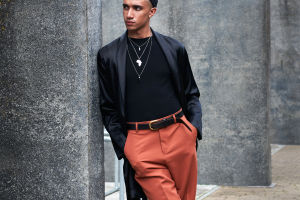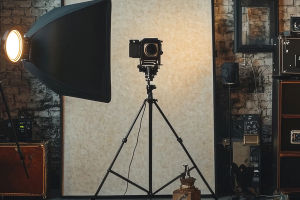Long Exposure Magic
Have you ever seen a photo where a flowing river appears like a smooth, misty veil, or the stars in the night sky form long, glowing streaks across the frame?
Chances are, you've witnessed the magic of long exposure photography. This technique is one of the most captivating and creative ways to capture time and motion in a single image.
By using longer shutter speeds, photographers can make fleeting moments last, turning dynamic movement into stunning, surreal works of art. In this article, we will explore how long exposure photography works and how you can use it to create unique, visually striking images of light trails, flowing water, clouds, and more.
Understanding Long Exposure Photography
Long exposure photography is all about controlling time. Unlike regular photography, where the shutter opens and closes almost instantly, a long exposure allows the shutter to remain open for an extended period—anywhere from a few seconds to several minutes, depending on the effect you want to achieve.
During this time, light and motion leave traces across the frame, creating the dreamy, flowing effects that make long exposure images so unique.
This technique is especially effective when you're capturing scenes that involve movement, such as water, clouds, or traffic. By keeping the camera's shutter open for longer periods, you can capture the movement of objects over time, giving them a fluid, ethereal quality that wouldn't be visible in a standard photo.
Creating Light Trails: A Dance of Light and Time
One of the most popular applications of long exposure photography is capturing light trails. Whether it's the headlights and taillights of cars on a busy road, the glowing path of a passing airplane, or even sparklers at a celebration, long exposure allows you to record the motion of light as it moves through the frame.
To achieve light trails, you typically want to use a tripod to keep your camera steady, preventing the background from blurring. Then, you can open the shutter for several seconds or more, depending on how long you want the light trails to appear. The result is an image that shows not just the position of the light source but its path through time.
For instance, in a cityscape, long exposure photography can turn a busy street into a dynamic, glowing river of light, adding drama and energy to the scene.
Capturing Flowing Water: The Smooth, Dreamy Effect
Water is another element that responds beautifully to long exposure photography. When capturing a river, waterfall, or even ocean waves with a long exposure, the water transforms into a silky, smooth texture. The movement of the water blurs, creating the illusion of soft, flowing mist that is both calming and visually mesmerizing.
To achieve this effect, you typically need to use a slower shutter speed (several seconds to a few minutes), and in some cases, a neutral density (ND) filter, which helps to reduce the amount of light entering the lens. This allows you to use a longer exposure even in bright daylight. The longer the exposure, the more motion is captured, turning turbulent waves into serene, silky patterns.
This technique can also be used for other moving elements in nature, like clouds. The slow movement of clouds across the sky, when captured with a long exposure, can create a dramatic effect, turning puffy clouds into streaks of soft white and gray. This is perfect for emphasizing the dynamic nature of the sky or creating a moody atmosphere.
Creating Mystical Effects: Mist, Fog, and the Unseen
Long exposure photography is not just for obvious movements like light and water; it's also a powerful tool for creating mystical or surreal effects. For example, by capturing fog or mist, you can create ethereal, ghostly images that have a dreamlike quality.
This is particularly effective in forest photography or landscape shots where the fog softens the image, adding an air of mystery or calm.
To achieve this effect, timing is crucial. Capturing mist or fog during a long exposure allows the atmosphere to fill the frame, creating soft, blurred textures that add depth and intrigue to your photos. In addition, the long exposure will highlight the contrast between the sharp outlines of trees, buildings, or other stationary objects, and the soft blur of the fog or mist. This technique is often used in landscape photography to create a more atmospheric, mystical look.
Practical Tips for Long Exposure Photography
While long exposure photography can be extremely rewarding, it does require some technical know-how and preparation. Here are a few tips to help you achieve the best results:
1. Use a Tripod: Stability is key when doing long exposure photography. A tripod will keep your camera still, preventing any unwanted camera shake or motion blur.
2. Choose the Right Shutter Speed: The length of the exposure depends on the effect you're after. For light trails, a few seconds might be enough, while capturing smooth water can require several seconds to a few minutes.
3. Use Filters: A neutral density (ND) filter can help reduce the light entering your camera, allowing for longer exposure times during the day without overexposing the image.
4. Experiment with Timing: Pay attention to how long you keep the shutter open. Longer exposures will show more motion, while shorter exposures will freeze some of the movement.
5. Shoot in Manual Mode: This gives you full control over the shutter speed, aperture, and ISO settings. You can experiment with different combinations to see what works best for the effect you want.
Post-Processing: Enhancing the Dreamlike Effect
After capturing your long exposure image, the next step is post-processing. While long exposure photography often creates beautiful results straight out of the camera, post-processing can enhance the final image.
You can adjust the exposure, contrast, and colors to highlight specific elements, such as making the light trails pop or enhancing the smoothness of water.
Many photographers also use software like Lightroom or Photoshop to fine-tune their images, adding or removing details as needed. For example, you might want to brighten the sky or emphasize the motion in the light trails. By carefully editing the image, you can further emphasize the artistic, dreamlike qualities that long exposure photography brings.
Conclusion: The Power of Time in Photography
Long exposure photography is one of the most compelling ways to capture time and motion, creating unique, artistic images that are impossible to achieve with standard photography. By allowing movement and time to leave traces across the frame, this technique transforms everyday scenes into captivating works of art.
Whether you're capturing light trails, flowing water, or misty landscapes, long exposure photography offers endless opportunities to explore creativity and bring new life to the world around you.
Have you ever tried long exposure photography? What kind of effects did you experiment with? Share your experiences and any tips you have for fellow photographers in the comments below. Whether you're a beginner or a seasoned photographer, this technique is a great way to push your creativity and capture the world in a new light.
Copyright © zogu 2021 - 2025. All Right Reserved.


